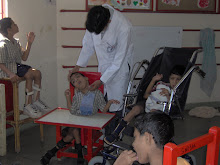
If you were to ask any preventive dentist to name the single most effective tool for preventing dental caries, they would without hesitation answer - Fluoride. At the same time search the net, and you will find numerous posts warning you about the hazards of fluoride. We look at the evolution of fluorides and the development of topical fluorides, a safe and simple way to protect your child's teeth.
How it began
In the 1930's an American dentist named Trendly H Dean, noticed that an element called fluoride, which had been shown to cause "mottling" or discoloration of teeth,when present in certain amounts was actually useful in preventing dental caries. He reasoned that if the optimum level of fluoride could be calculated then the water we drink could be "fluoridated" then dental caries could actually be prevented. This led to the adoption of water fluoridation in the United States in 1945. Over the years few battles have been fought with as much passion as the debate on fluoride. That fluorides reduce dental decay is a proven fact. But also proven is the fact that calculating the "optimum levels" of fluoride is not as easy as it is made out to be. The most vehement opposition to fluoridation has often been from the medical community in India, who have stressed that in an Indian setup the ingestion of fluoride can be detrimental to health. Topical fluorides act as a useful tool to make sure your child's teeth get the benefit of water fluoridation, but the body suffers none of the ill effects of ingestion.
How do they work?
Fluorides have three main actions
- They strengthen the outermost layer of the tooth or "enamel" by making it more resistant to dissolution from the acids produced by bacteria.
- They interfere with the metabolism of the bacteria and prevents them from producing acids
- They make the surface of the tooth smoother, thereby making it difficult for groups of microorganisms, or "plaque" to accumulate on the tooth.
In what form can i give my child topical fluoride?
Most of us use fluorides in the form of toothpastes. Most commercial toothpastes available today are fluoridated, a far cry from the 1980's and early 1990's when fluoridated pastes were actually banned for a while. Topical fluorides may however be classified as
- Self Applied
- Professionally Applied
Self Applied Topical Fluorides

Fluoridated Toothpastes
Fluoridated pastes are the most commonly used form of topical fluoride. Very often though there is the genuine fear that parents, eager to prevent tooth decay may use more fluoridated paste than is necessary. Over the years several authors have put forward guidelines to help regulate the amount of fluoride given to a child in the form of a tooth paste.Some guidelines that ask the parent to brush once a day with fluoridated toothpaste and twice a day with non fluoridated paste, though sound theoretically are hardly practical. The guidelines i have found most useful are those put forward by the Canadian Dental Association.

- always supervise the amount of toothpaste used
- teach your child to spit after brushing
- help your child brush until 8 years of age
For a young child i would recommend a low fluoride toothpaste. In India they are presently marketed as kidodent, crest squeeze and Colgatesmiles. These pastes have a fruity flavor that is not irritant to a sensitive oral mucosa.
Fluoridated Mouthrinses
While fluoride mouthrinses have been shown to greatly reduce tooth decay, and are certainly useful in children with medical conditions such as congenital heart disease or renal failure, I would not recommend their use in children with severe neuromuscular disorders such as some cases of cerebral palsy, as they may end up ingesting far more mouthwash than is acceptable. Although the one-time ingestion a cap full of fluoride mouthrinse is not fatal or even dangerous, a prolonged daily ingestion can be dangerous. A safer delivery system of fluoride in such children would be the use of a professionally applied fluoride varnish.
Professionally Applied Fluorides
Professionally applied fluorides, are higher concentrations of fluorides, applied by the dentist to protect your child's teeth. They are available in the form of gels, solutions and varnishes. From the aspect of safety, I would recommend a fluoride varnish. Even though it is slightly more expensive than the traditional gel or solution, the varnish sticks to your child's tooth therefore reducing the chances of swallowing the fluoride. A first application of fluoride varnish soon after the primary teeth erupt is essential for those children with special needs such as cerebral palsy, whose oral hygiene is compromised due to an ineffective neuromuscular coordination.
Fluorides are often referred to as a "Double edged sword", however a judicious use of topical fluoride is not only safe but also goes a long way in preventing dental decay in your child.
For Further Queries you can contact me;
Dr Sharat Chandra Pani
Consultant Pediatric and Preventive Dentist
Senior Lecturer
KVG Dental College
Sullia India
+919886374024








No comments:
Post a Comment